- Home
- Ron Chernow
The House of Morgan
The House of Morgan Read online
Critical Acclaim for
Ron Chernow’s The House of Morgan,
WINNER OF THE 1990 NATIONAL BOOK AWARD FOR NON-FICTION:
“The House of Morgan offers a long look at how the contemporary financial landscape came into being. . . . A panoramic and well-researched look at the most powerful family of banks in America over the last century . . . Chernow has a supple, refined style.”
—The Washington Post Book World
“Chernow presents fresh portraits of the Morgans and the brilliant senior partners who made the bank an international powerhouse. . . . He dishes up enough scandal, tragedy, and intrigue for a TV miniseries.”
—USA Today
“A brilliant, generation-spanning history of the Morgan banking empire, which offers a wealth of social and political as well as economic perspectives. . . . He writes in a lively, definite fashion that could make the exhaustively documented account the standard reference for specialists as well as lay readers.”
—Kirkus Reviews (starred review)
“Entertaining and meticulously researched . . . pulls aside the cloak of mystery that has long surrounded this powerful American institution . . . that wielded far more power than most Americans ever imagined, even in their most fevered nightmares.”
—Dallas Times Herald
“Packed with revelations, Chernow’s mammoth history demystifies the inner workings of the secretive Morgan banking empire.”
—Publishers Weekly
“Brilliantly researched and written, The House of Morgan is to . . . Liar’s Poker what War and Peace is to a Judith Krantz novel. . . . To a potentially dry and certainly difficult subject—the influence of high finance on modern life—Chernow brings a lively style and the endurance of a trouper.”
—The Wall Street Journal
“Long, ambitions, but highly readable . . . Chernow highlights the degree to which the Morgan bank symbolized an era of Anglo-American hegemony and the growing shift of financial power from London to New York. . . . The book is as much about the characters of Morgan as about its history.”
—The Economist
“Chernow vividly portrays the influence that the Morgan banks have had on the history of the Western economy since the late-eighteenth century. . . . Epic . . . An important book.”
—Library Jounral (starred review)
“Ron Chernow’s The House of Morgan is utterly absorbing. The study of J. P. Morgan & Co. and its offshoots is not merely the chronicle of an institution, but indeed of American finance and society. Chernow has done his research thoroughly, and written it up splendidly. A must for anyone curious as to how things have come to work the way they do.”
—Michael M. Thomas
“Far more than the history of an American banking dynasty—it’s the story of the evolution of modern finance . . . so skillfully and engagingly written, it’s hard to put down once begun . .. Richly woven . . . Every page is fascinating.”
—Pittsburgh Press
“A fabulous cast of characters, some well-known by name if not personality, others well-known only to the aficionados of wealth . . . This evolution of banking and companies, and the triumphs and tragedies along the way, is both a fascinating and instructive story.”
—Fort Worth Star-Telegram
“Rich, monumental. . . As enchanting as an old-fashioned novel.”
—Entertainment Weekly
“A lucid and highly entertaining account of this century and a half of transmogrification, presenting the findings from newly available archival material to capture brilliantly the inherent drama, global historical sweep, immense business, and political magnitudes, high social glamour, and, above all, moral ambiguities of the story.”
—America
“As informative and entertaining a history, especially of the period from 1880 to 1930, as this reviewer has ever read . . . Nowhere has our tenuous financial system been better described than by Chernow.”
—Los Angeles Times Book Review
THE HOUSE OF MORGAN
An American Banking Dynasty and the Rise of Modern Finance
RON CHERNOW
For Valerie and Israel and Ruth
Copyright © 1990 by Ron Chernow
Foreword © 2010 by Ron Chernow
All rights reserved. No part of this book may be reproduced in any form or by any electronic or mechanical means, including information storage and retrieval systems, without permission in writing from the publisher, except by a reviewer, who may quote brief passages in a review. Scanning, uploading, and electronic distribution of this book or the facilitation of such without the permission of the publisher is prohibited. Please purchase only authorized electronic editions, and do not participate in or encourage electronic piracy of copyrighted materials. Your support of the author’s rights is appreciated. Any member of educational institutions wishing to photocopy part or all of the work for classroom use, or anthology, should send inquiries to Grove/Atlantic, Inc., 841 Broadway, New York, NY 10003 or [email protected].
Excerpt from The House of Morgan: An Intimate Portrait by Herbert L. Satterlee reprinted with permission of Macmillan Publishing Company. Copyright © 1939 by Herbert L. Satterlee, renewed 1967 by Mrs. Mabel Satterlee Ingalls.
Published simultaneously in Canada
Printed in the United States of America
Library of Congress Cataloging-in-Publication Data
Chernow, Ron.
The house of Morgan: an American Banking dynasty and the rise of modern finance / by Ron Chernow.
ISBN-13: 978-0-8021-4465-2
1. Morgan Guaranty Trust Company of New York—History. 2. Banks and banking—United States—History. I. Title.
HG2613.N54M6613 1990 332.1’2’097471—dc20 89-17542
DESIGN BY JOYCE C. WESTON
Grove Press
an imprint of Grove/Atlantic, Inc.
841 Broadway
New York, NY 10003
Distributed by Publishers Group West
www.groveatlantic.com
10 11 12 13 14 10 9 8 7 6 5 4 3 2 1
It is necessarily part of the business of a banker to profess a conventional respectability which is more than human. Life-long practices of this kind make them the most romantic and the least realistic of men.
—John Maynard Keynes
CONTENTS
Foreword
Prologue
PART ONE: THE BARONIAL AGE, 1838-1913
1. Scrooge
2. Polonius
3. Prince
4. Corsair
5. Corner
6. Trust
7. Panic
8. Titanic
PART TWO: THE DIPLOMATIC AGE, 1913-1948
9. Metamorphosis
10. War
11. Explosion
12. Odyssey
13. Jazz
14. Golden
15. Saint
16. Crash
17. Depression
18. Midget
19. Crack-Up
20. Wizard
21. Embezzler
22. Appeasement
23. Hostages
24. Passages
PART THREE: THE CASINO AGE, 1948-1989
25. Methuselah
26. Mavericks
27. Jonah
28. Tabloid
29. Samurai
30. Sheiks
31. Tombstones
32. Samba
33. Traders
34. Bang
35. Bull
36. Skyscraper
Acknowledgments
Abbreviations
Notes
Bibliography
Photo Credits
Index
“THE HOUSE OF MORGAN” 20th ANNIV
ERSARY EDITION
Like many first books, The House of Morgan was something of a happy accident in the author’s life when it was published twenty years ago. After years toiling in the vineyard of freelance magazine work, I decided to take a breather from that hectic world in the mid 1980s and landed a job in a public policy foundation called The Twentieth Century Fund, where I was put in charge of financial policy studies. During this heyday of the bull market that roared through Ronald Reagan’s presidency, huge numbers of people were swept into the financial world for the first time, whether as foot soldiers in investment banks or small investors dabbling in common stocks, and they had little historic perspective on the new world they inhabited.
As I dipped into the rich literature of financial history, I was struck that the old Wall Street—elite, clubby, and dominated by small, mysterious partnerships—bore scant resemblance to the universe of faceless conglomerates springing up across the globe. It dawned on me that the hordes of financial novices might be ripe for a history that would chronicle how the old Wall Street evolved into the new. A straight history, I knew, would be a tedious task for readers and do small justice to the turbulent pageant of heroes and scoundrels I was unearthing. So I posed the question: was there a single family or firm whose saga could serve as a prism through which to view the panoramic saga of Anglo-American finance? There were relatively few dynasties in financial history and, hence, few suitable candidates. Some names, such as Rothschild, had long since passed the zenith of their glory, while others had a contemporary resonance with only shallow roots in the past. Only one firm, one family, one name rather gloriously spanned the entire century and a half that I wanted to cover: J.P. Morgan. To reconstruct the Morgan story, I realized, would be a daunting enterprise, for I would have to narrate the intricate stories of four interlocking firms: J.P. Morgan and Morgan Stanley in New York, Morgan Grenfell in London, and Morgan et Compagnie in Paris.
As an old English major and novelist manque, I had no training in historical methods, nobody to steer me in the right direction, as I bumbled about in my early research. I had naively assumed that, within its august walls, J.P. Morgan & Co. housed a comprehensive set of historical papers and that it would be my task to lay my hands on it. For six months, I lunched with two affable bank representatives as they and their associates debated whether to cooperate with my project. Then one day, I made a startling discovery: the papers of Thomas W. Lamont, senior partner of the Morgan bank during the inter-war years, resided at the Harvard Business School Library. During my first day of research there, I pored over correspondence between Lamont and Franklin Roosevelt, Benito Mussolini, Charles Lindbergh, and Nancy Astor. These papers threw open a window on the hermetically sealed world of Morgan partners.
Aside from the grace and clarity of these letters—old-school bankers tended to be surprisingly literate—they were detailed and gripping beyond my wildest imaginings. When Lamont spoke on the telephone with President Herbert Hoover, for instance, a dutiful amanuensis took down a verbatim transcript. Suddenly, the opaque Morgan world had turned transparent. Soon I uncovered papers of other Morgan partners at Amherst, Yale, Columbia, the University of Virginia, and, of course, the Morgan Library in New York. Sometimes I felt as if I could trail the Morgan partners around the bank on an almost hourly basis. Curiously enough, nobody at J.P. Morgan & Co. had ever noticed the disappearance of tens, perhaps hundreds, of thousands of internal documents. So much for the vaunted Morgan reputation for secrecy!
When I signed the contract for The House of Morgan, I had worried about a shortage of original documents and now had to contend with the embarrassment of riches. My advance, if generous for a first book, could scarcely cover years of leisurely research, so I had to cram a gigantic amount of work into a brief span. Somehow I managed to research and write an eight hundred-page book in two-and-a-half years—a feat I could never duplicate today. I was sustained by the sheer excitement of my findings, the knowledge that I had luckily stumbled upon the foremost drama in financial history. I also coasted on the pent-up energy of a young writer who had finally secured his first book contract after many failed efforts. Whenever I think of the time spent on the book, I remember the headlong pace, the frantic reading into the night, the exhausting attempt to squeeze the epic story of finance between two covers. It is therefore with a sense of miraculous good fortune that I now open the book and find lucid, coherent prose that shows, at least to my eyes, little of the sweat and haste of its creation.
R.C.
BROOKLYN, NEW YORK
SEPTEMBER 2009
PROLOGUE
This book is about the rise, fall, and resurrection of an American banking empire—the House of Morgan. Perhaps no other institution has been so encrusted with legend, so ripe with mystery, or exposed to such bitter polemics. Until 1989, J. P. Morgan and Company solemnly presided over American finance from the “Corner” of Broad and Wall. Flanked by the New York Stock Exchange and Federal Hall, the short building at 23 Wall Street, with its unmarked, catercorner entrance, exhibited a patrician aloofness. Much of our story revolves around this chiseled marble building and the presidents and prime ministers, moguls and millionaires who marched up its steps. With the records now available, we can follow them inside the world’s most secretive bank.
The old pre-1935 House of Morgan was probably the most formidable financial combine in history. Started by an American banker, George Peabody, in London in 1838, it was inherited by the Morgan family and transplanted to New York to famous effect. In the popular mind, the two most familiar Morgans—J. P. Morgan, Sr. (1837-1913), and J. P. Morgan, Jr. (1867-1943)—are rolled into a composite beast, J. P. Morgan, that somehow endured for more than a century. Their striking physical resemblance—the bald pate, the bulbous nose, the pear-shaped frame—has only fed confusion. For admirers, these two J. P. Morgans typified the sound, old-fashioned banker whose word was his bond and who sealed his deals with a handshake. Detractors saw them as hypocritical tyrants who bullied companies, conspired with foreign powers, and coaxed America into war for profit. Nobody was ever neutral about the Morgans.
Before the Depression, 23 Wall was headquarters of an empire with several foreign outposts. Seated behind rolltop desks on the Broad Street side, the New York partners were allied with three other partnerships—Morgan Grenfell in London, Morgan et Compagnie in Paris, and Drexel and Company, the so-called Philadelphia branch of J. P. Morgan. Of these, Morgan Grenfell was easily the most powerful, forming the central London-New York axis of the Morgan empire. It was a transatlantic post office for British and American state secrets. Before the New Deal, the term “House of Morgan” applied either to J. P. Morgan and Company in New York or, more broadly, to the whole shadowy web of partnerships.
The old House of Morgan spawned a thousand conspiracy theories and busied generations of muckrakers. As the most mandarin of banks, it catered to many prominent families, including the Astors, Guggenheims, du Ponts, and Vanderbilts. It shunned dealings with lesser mortals, thus breeding popular suspicion. Since it financed many industrial giants, including U.S. Steel, General Electric, General Motors, Du Pont, and American Telephone and Telegraph, it entered into their councils and aroused fear of undue banker power. The early House of Morgan was something of a cross between a central bank and a private bank. It stopped panics, saved the gold standard, rescued New York City three times, and arbitrated financial disputes. If its concerns transcended an exclusive desire for profit, it also had a peculiar knack for making good works pay.
What gave the House of Morgan its tantalizing mystery was its government links. Much like the old Rothschilds and Barings, it seemed insinuated into the power structure of many countries, especially the United States, England, and France, and, to a lesser degree, Italy, Belgium, and Japan. As an instrument of U.S. power abroad, its actions were often endowed with broad significance in terms of foreign policy. At a time when a parochial America looked inward, the bank’s ties abroad, especially those with
the British Crown, gave it an ambiguous character and raised questions about its national loyalties. The old Morgan partners were financial ambassadors whose daily business was often closely intertwined with affairs of state. Even today, J. P. Morgan and Company is probably closer to the world’s central banks than any other bank.
This empire was shattered by the Glass-Steagall Act of 1933, which erected a high wall between commercial banking (making loans and accepting deposits) and investment banking (issuing stocks and bonds). In 1935, J. P. Morgan and Company chose to remain a commercial bank and spun off Morgan Stanley, an investment house. Seeded with J. P. Morgan capital and personnel, Morgan Stanley for decades clearly exhibited common ancestry with its Morgan brother down the block. They shared many clients and kept alive a family feeling no less potent for its informality. Glass-Steagall didn’t bar J. P. Morgan from holding a minority stake in an overseas securities house, however. Until 1981, it kept a one-third interest in Morgan Grenfell. As our story will show, the three Morgan houses functioned as a de facto House of Morgan long after the New Deal ended and in the early 1970s even contemplated reunion. Today for the first time, the three houses lack formal links and are engaged in fierce rivalry. As deregulation in London and New York has dismantled old regulatory barriers, the three increasingly clash as they sell competing services.
While people know the Morgan houses by name, they are often mystified by their business. They practice a brand of banking that has little resemblance to standard retail banking. These banks have no teller cages, issue no consumer loans, and grant no mortgages. Rather, they perpetuate an ancient European tradition of wholesale banking, serving governments, large corporations, and rich individuals. As practitioners of high finance, they cultivate a discreet style. They avoid branches, seldom hang out signposts, and (until recently) wouldn’t advertise. Their strategy was to make clients feel accepted into a private club, as if a Morgan account were a membership card to the aristocracy.

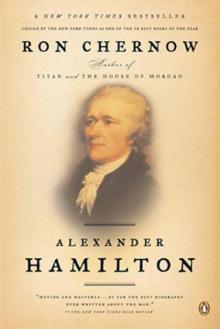 Alexander Hamilton
Alexander Hamilton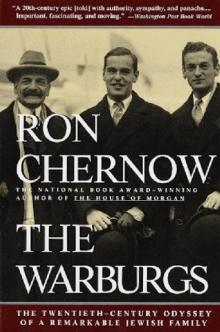 The Warburgs
The Warburgs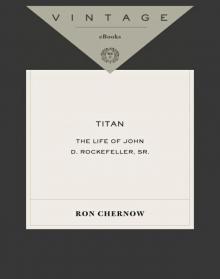 Titan
Titan Grant
Grant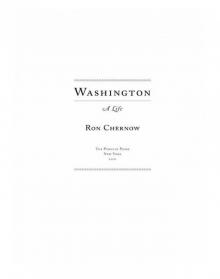 Washington
Washington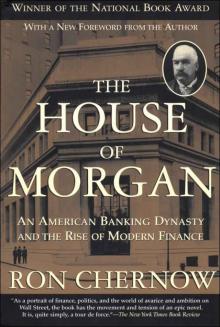 The House of Morgan
The House of Morgan The House of Morgan: An American Banking Dynasty and the Rise of Modern Finance
The House of Morgan: An American Banking Dynasty and the Rise of Modern Finance